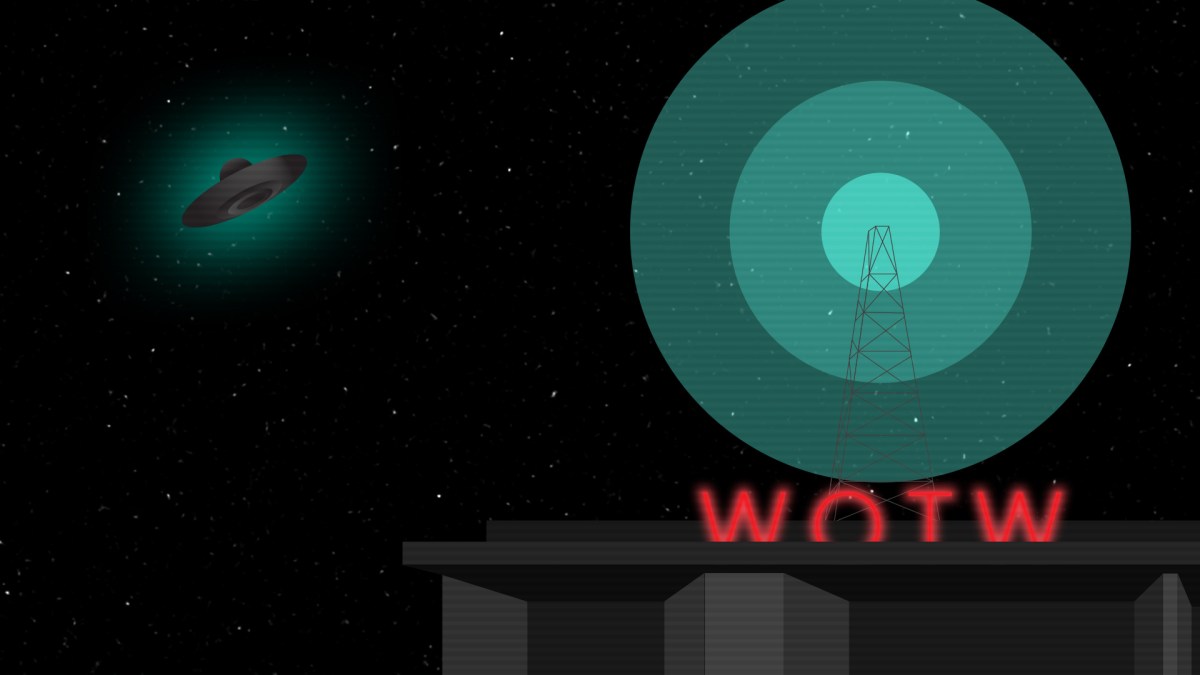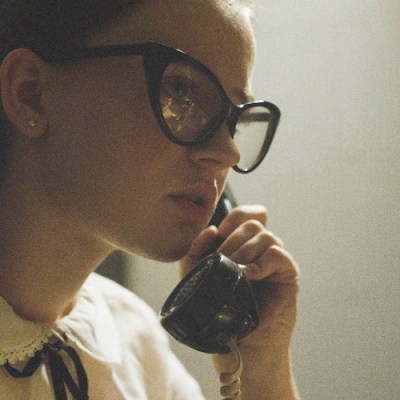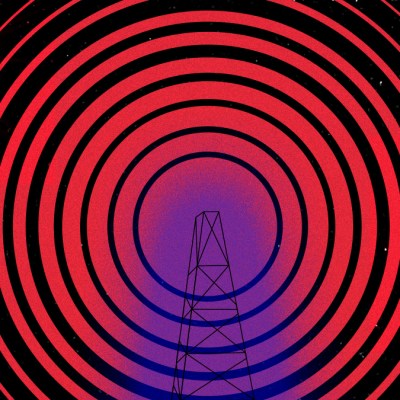The Vast of Night and the Dawn of UFO Mythology
Amazon’s new science fiction film, The Vast of Night, revisits the crossroads in American culture where many people became ready to believe in UFOs.

This article is presented by: 
The opening scene of The Vast of Night, a new science fiction film now streaming on Amazon Prime, wears its influences on its sleeve. While it doesn’t mention The Twilight Zone by name, the film begins with a static-bedeviled television being watched in the middle of the day, like the memory of a late ‘50s childhood half-forgotten. The story you’re about to see, explains a disembodied voice, is a trip into “Paradox Theatre.” This show-within-a-movie might be fictional, but the moment it represents in science fiction and American culture is not.
Set in the twilight of the Eisenhower years, The Vast of Night is the debut film from director Andrew Patterson, which is all the more impressive since it so inhabits its time and place in American life with authentic nostalgia. At the tail end of what Don McLean romanticized in “American Pie,” the late ‘50s and early ‘60s were a moment of coming of age for the generation of baby boomers born after World War II. The youth quake hadn’t happened yet, but the youth was still there, enraptured by stories of the past—and the anxieties of an unknown still to come.
Stargazing was nothing new, of course, but a growing preoccupation with what hid between those stars was. Well before Sputnik made folks look to the skies with dread, the first “flying saucer” had already done the same. In June of 1947 pilot Kenneth Arnold claimed he saw nine saucer-shaped, silvery smooth objects flying above Mt. Rainer. By 1950 the first B-movie based on this iconography, the aptly titled The Flying Saucer, was released. Soon the image of disk-shaped UFOs became the bread and butter of sci-fi storytellers in literature, film, and television.
Yet by and large these fictions were created at a time when most sci-fi writers didn’t actually believe stories about lights in the skies. Arguably the genre was at a crossroads by the time of Kennedy’s inauguration. For much of the 20th century, sci-fi had mostly been dominated by hopeful optimism and utopian allegories about tomorrow by Jules Verne or (soon) Gene Roddenberry. The sci-fi that insisted the truth was out there, and that it was bleak and hidden, was yet to come.
The Vast of Night luxuriates in this intersection, both for its young characters, and the dawning awareness of UFO mania. We see sci-fi positivity reflected when Fay (Sierra McCormick) tells a boy from school, Everett (Jake Horowitz), about articles that say one day we’ll have self-driving cars or “television telephones.” She’s filled with the general sense of excitement sci-fi tells us to expect. But The Vast of Night itself is not one of those happy stories, nor is it a schlocky drive-in movie about flying saucers.
Rather it is a modern film that comes after decades of the UFO paranoia took root… as well as a hefty amount of pessimism that came in the ensuing years. The number of UFO sightings which sprung up between the ‘50s and ‘60s reached almost epidemic proportions, especially as more people saw (or imagined they saw) the saucer-shaped crafts inadvertently popularized by Arnold.
Looking back at the UFO mania of the mid-20th century, Close Encounters of the Third Kind director Spielberg called it an American mythology that he believed in. After all, he grew up in Arizona’s wide open spaces during the ‘50s and ‘60s, and lived through the disillusionment of the ‘70s. Hence before Close Encounters’ release he said, “I wouldn’t put it past this government that a cosmic Watergate has been underway for the last 25 years… and eventually they might want to tell us about what they’ve discovered over the decades.”
That sense of primal awe of the unknown from above in Close Encounters permeates the unseen dread of The Vast of Night, as does some of the bleaker and more outlandish anxiety that came afterward, from fiction like The X-Files to alleged true stories, such as the terrifying alien abductions recounted in Fire in the Sky (1993).
The Vast of Night examines this clash between awe and horror, often with just a few lines of dialogue and intimations toward the unknown. While the film is set during a period of alleged innocence for character characters like Everett and Fay, their bubble is being coolly observed, as much by us as any visitors from above.
In recent years, decades worth of conspiracy theories were given seeming credence when the existence of UFOs (if not extraterrestrials) were confirmed by the Pentagon… sixteen years after the Navy recorded the video. Recent science fiction tales of “alien visitors” treat the fiction as more everyday fact. The almost biblical awe of Spielberg’s Close Encounters is instead replaced by a supernatural FBI procedural and a social media trend about folks agreeing to storm Area 51.
The Vast of Night grapples with all these anxieties and evolving disillusionments: the dawning realization about “visitors” and truth being out there—plus the bitter realities that the first generation who grew up with flying saucer iconography had to confront. It’s the romance of the past and the chill of the present. But then, as the film’s opening promises, this is a passion play inside of paradox theatre.
The Vast of Night is now streaming on Amazon Prime.


